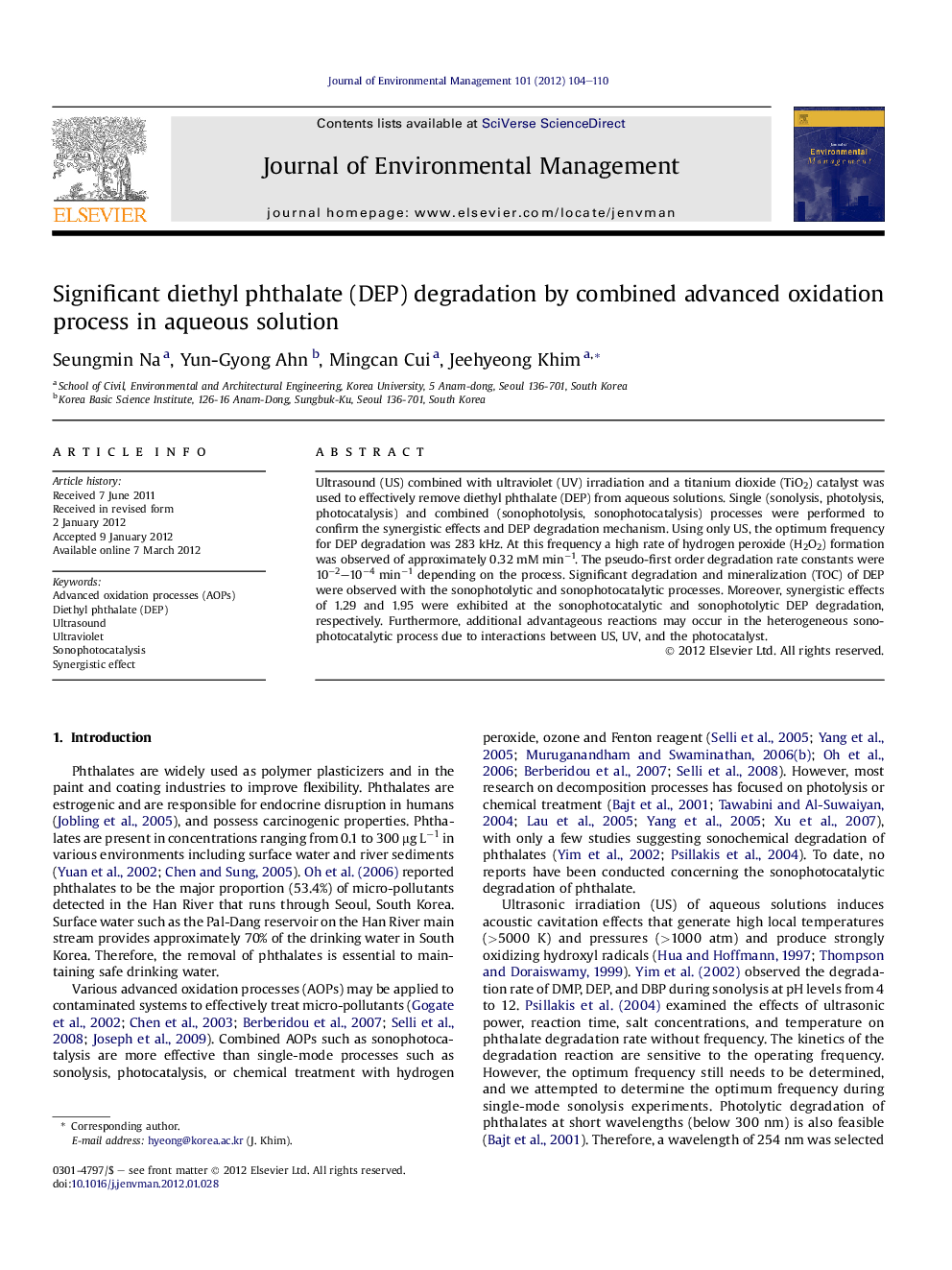| Article ID | Journal | Published Year | Pages | File Type |
|---|---|---|---|---|
| 1056841 | Journal of Environmental Management | 2012 | 7 Pages |
Ultrasound (US) combined with ultraviolet (UV) irradiation and a titanium dioxide (TiO2) catalyst was used to effectively remove diethyl phthalate (DEP) from aqueous solutions. Single (sonolysis, photolysis, photocatalysis) and combined (sonophotolysis, sonophotocatalysis) processes were performed to confirm the synergistic effects and DEP degradation mechanism. Using only US, the optimum frequency for DEP degradation was 283 kHz. At this frequency a high rate of hydrogen peroxide (H2O2) formation was observed of approximately 0.32 mM min−1. The pseudo-first order degradation rate constants were 10−2–10−4 min−1 depending on the process. Significant degradation and mineralization (TOC) of DEP were observed with the sonophotolytic and sonophotocatalytic processes. Moreover, synergistic effects of 1.29 and 1.95 were exhibited at the sonophotocatalytic and sonophotolytic DEP degradation, respectively. Furthermore, additional advantageous reactions may occur in the heterogeneous sonophotocatalytic process due to interactions between US, UV, and the photocatalyst.
► Diethyl phthalate is the main micro-pollutant in the Han River of Seoul, South Korea. ► DEP degradation constant and synergistic effect by each single and combined process was studied. ► Combined process was effective due to the high OH radical formation and added positive reactions. ► From this result, enhanced DEP mineralization and biodegradability were also observed. ► Thus, combined process can be considered as a pre-treatment in drinking water system.
